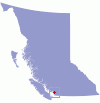Day trips of fishing, boating or whale watching tours draw water fanatics looking for some local or out-of-town entertainment!
The surrounding rivers and wetland create perfect picturesque viewing of fascinating habitats for fish and migrating birds.
Richmond, on the shore line of the mainland, is actually comprised of a series of islands at the mouth of the Fraser River; Sea Island, Lulu Island and fifteen smaller islands.
While visiting Richmond plan to see some of the historic sites such as the Britannia Heritage Shipyard Park, the award winning Murakami House, and the Gulf of Georgia Cannery. When visitors get hungry they generally make a special stop in Steveston for some of their famous fish and chips to take on a wharf side walk.
All flights with travelers arriving into Vancouver will discover that Richmond houses the Vancouver International Airport on Sea Island, which is connected to the mainland by bridges and highways. It is very unusual to visit British Columbia's west coast without passing through Richmond.
Population: 182,000
Highlights:
Garry Point Park, beaches and estuary habitat
Britannia Heritage Shipyard
Gulf of Georgia Cannery
Steveston Salmon Festival held each year on Canada Day
London Heritage Farm
Cycling Routes and Scenic Trails
London Farm
Finn Slough
The Buddhist Temple
The many fruit and vegetable stands along Steveston Highway
Britannia Heritage Shipyard Park
Murakami House
The Gulf of Georgia Cannery
Things To Bring:
Layered dressing is recommended, however, drastic weather changes are rare.
History:
On Stevenson and Sea Islands, in Richmond (as it the area is called today), historical remains indicate that a few of the First Nations Salish Tribes resided or made villages here. Often their stay was temporary (a year or less) and other tribes passed through or used the surrounding islands for seasonal fishing, collecting shellfish and harvesting the wild berries. The aboriginal way of life along the Sunshine Coast had existed for thousands of years prior to the arrival of white European settlers.
In the 1860's, farming was the first major industry developed in the area by European settlers. Richmond was also a transport route for the nearby City of New Westminster. Farming required heavy labour and the land was more effort in some cases due to draining and clearing necessary to prepare the area. However, the effort was rewarded with remarkable agriculture supported by the nature of the soils on the surrounding islands and weather.
Over the next one hundred years the city of Richmond would grow to support the major industries of fishing, agriculture, shipping and aviation for (what would later become) the region of Greater Vancouver.
The fishing industry in Richmond had attracted the Chinese migrant workers who were brought to the area originally to develop the railways. The First Nation Aboriginals and the Chinese played a large role as contract employees and the production end of Richmond's boat building, canneries and fishing industry, especially concentrated in the Steveston marine community.
Climate:
Summer average 19 degrees Celsius
Winter average 8 degrees Celsius
Distance between Richmond and the mountain range is a benefit to the city, it measures 30% lower annual rainfall in comparison to Vancouver. Rarely do here winters have any snow.
Richmond Accommodations
Richmond Things to Do
British Columbia

